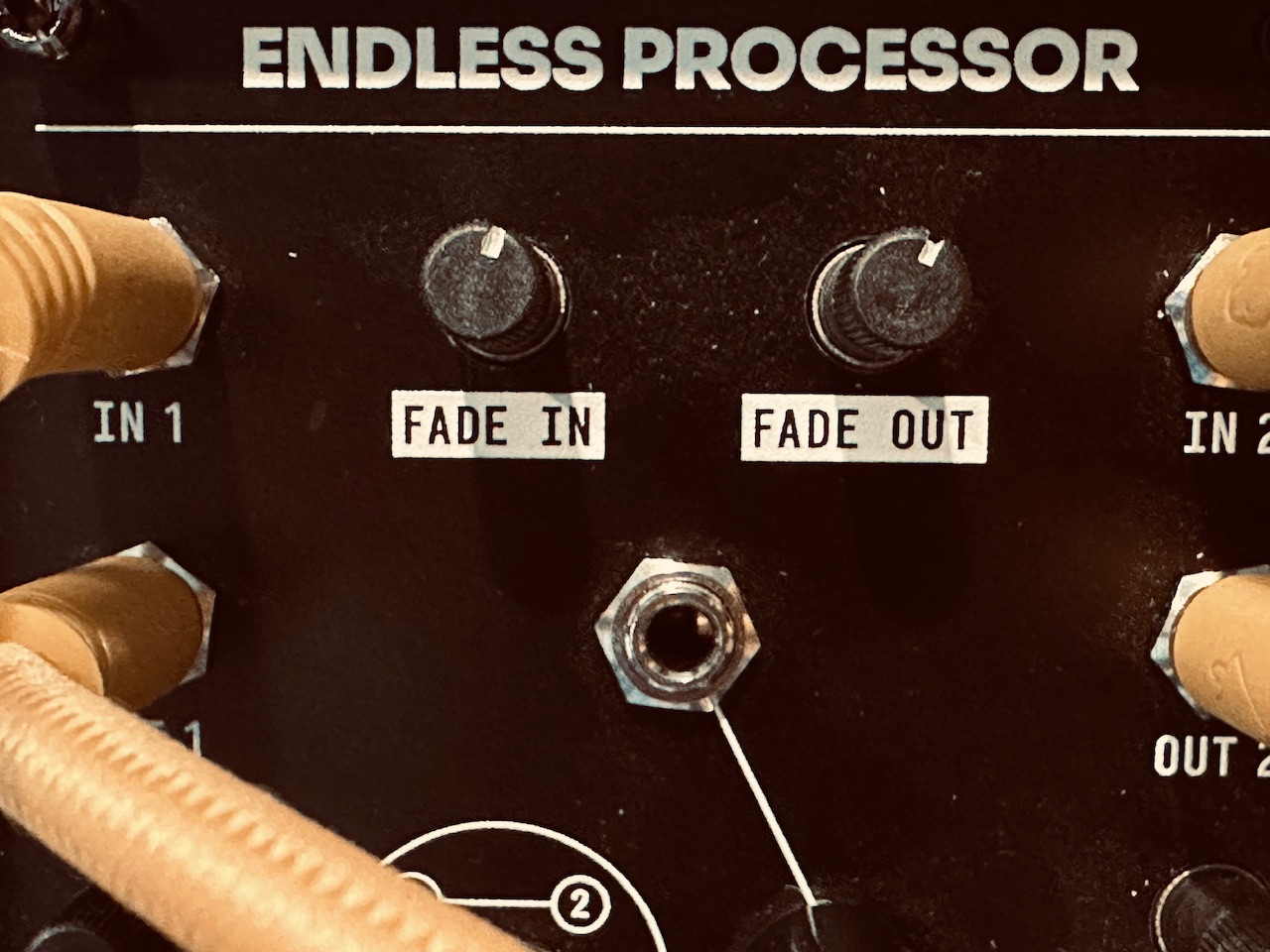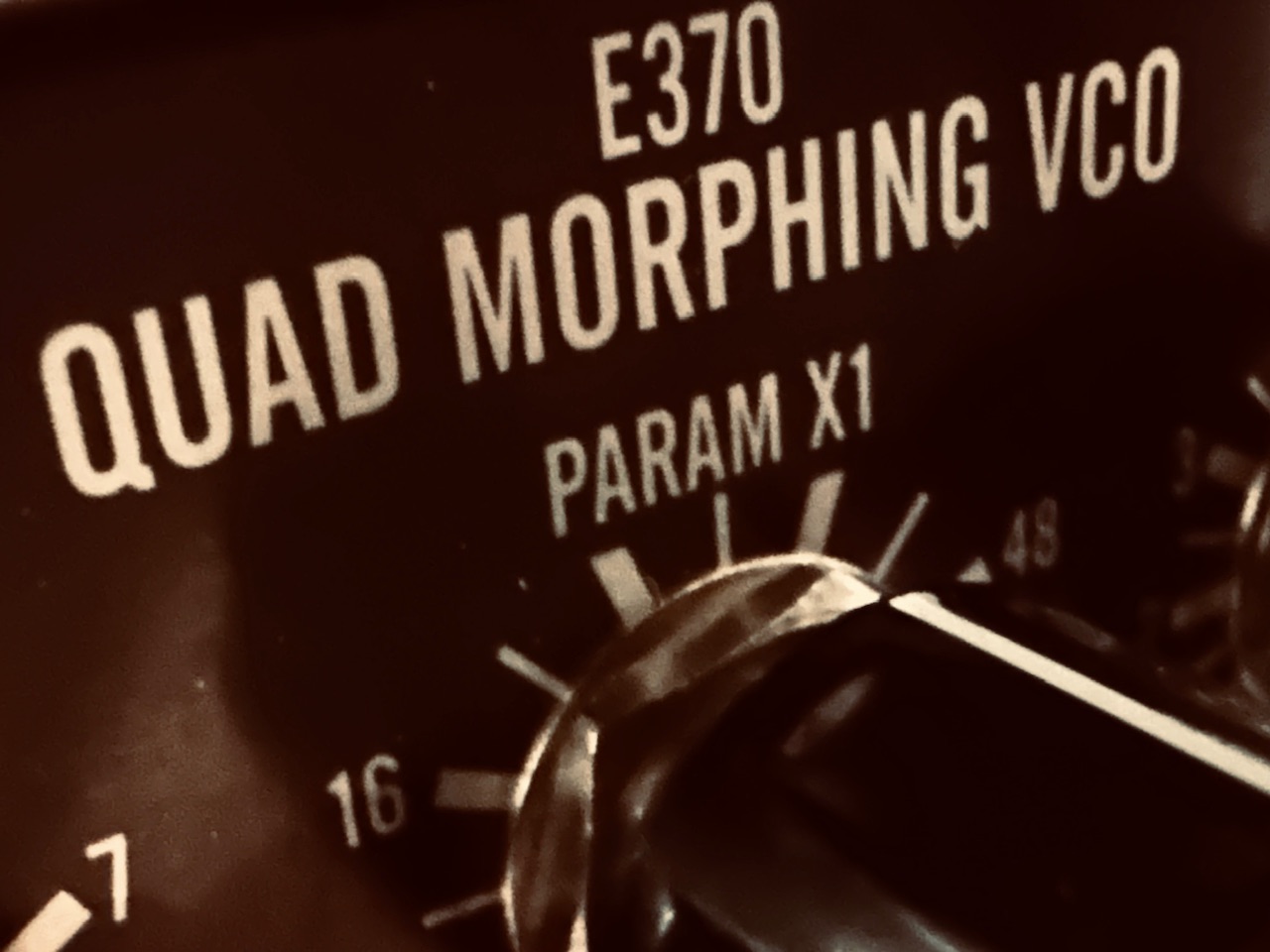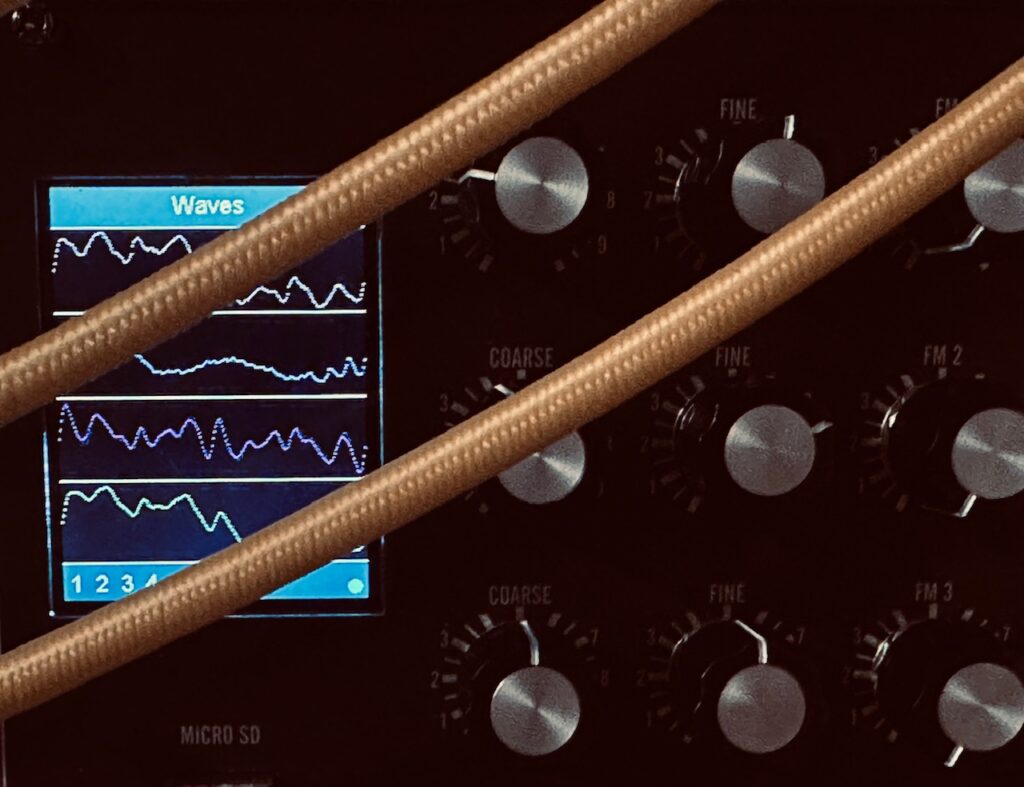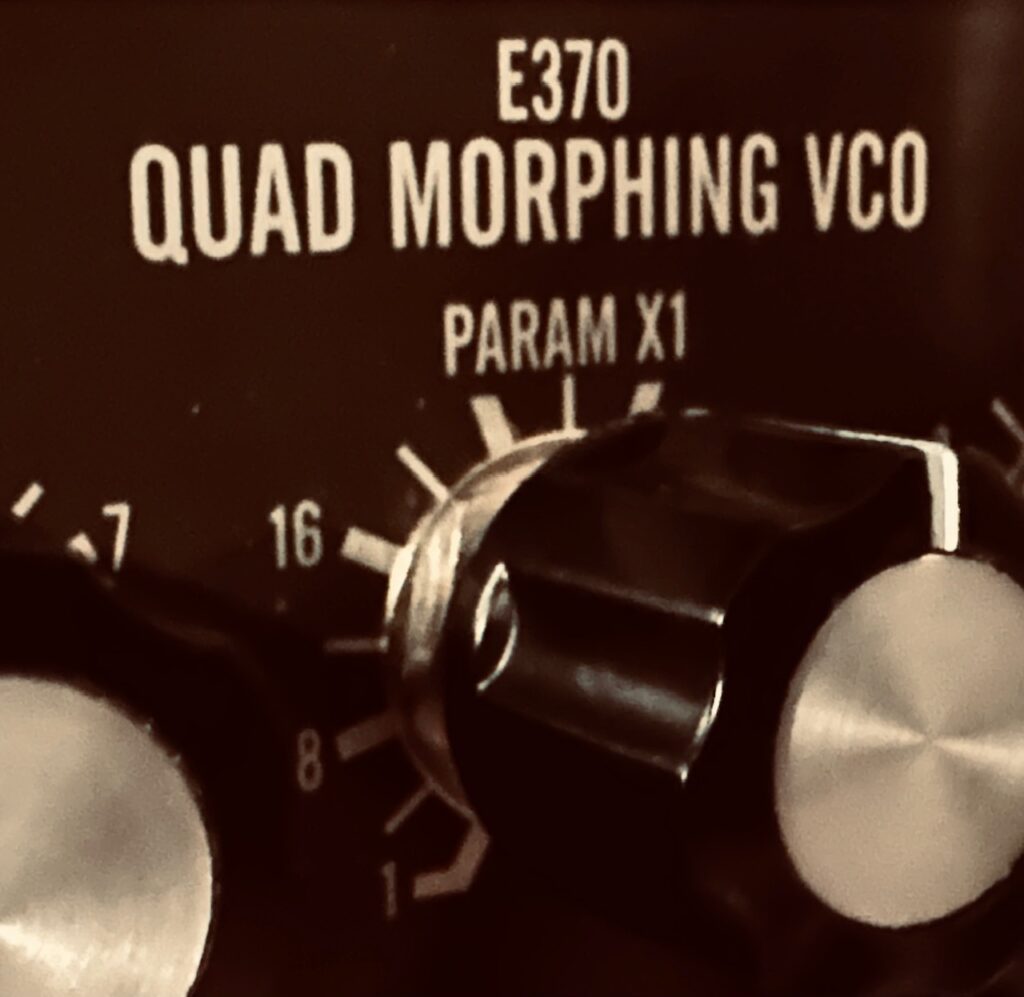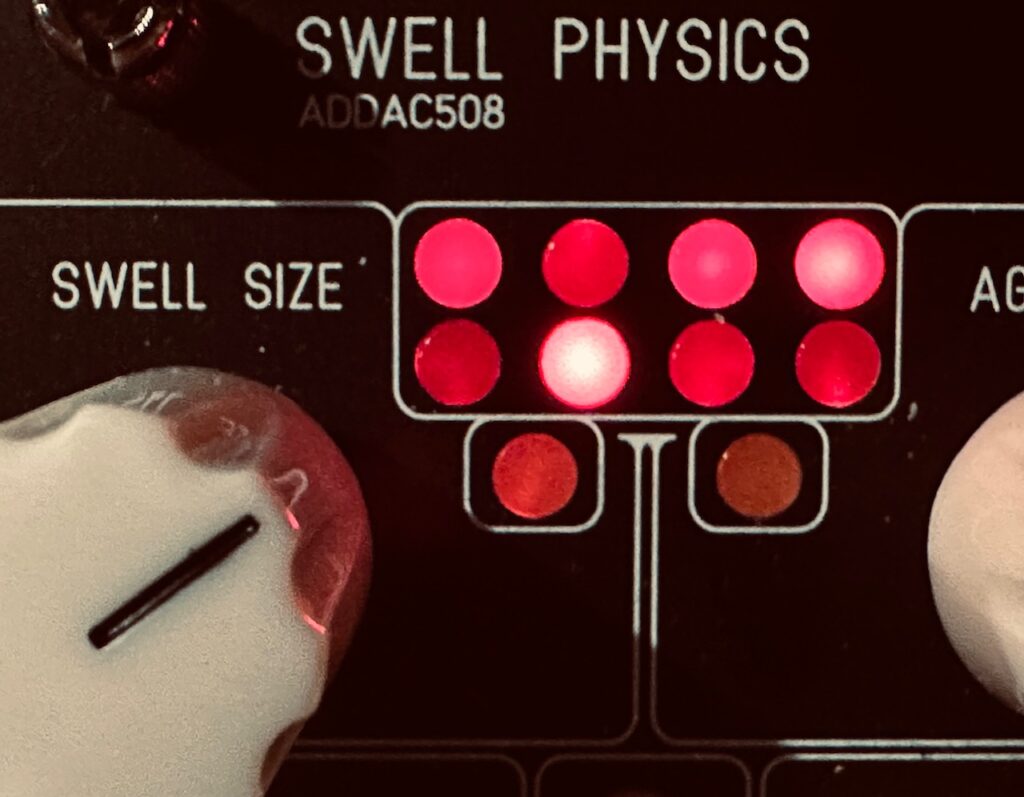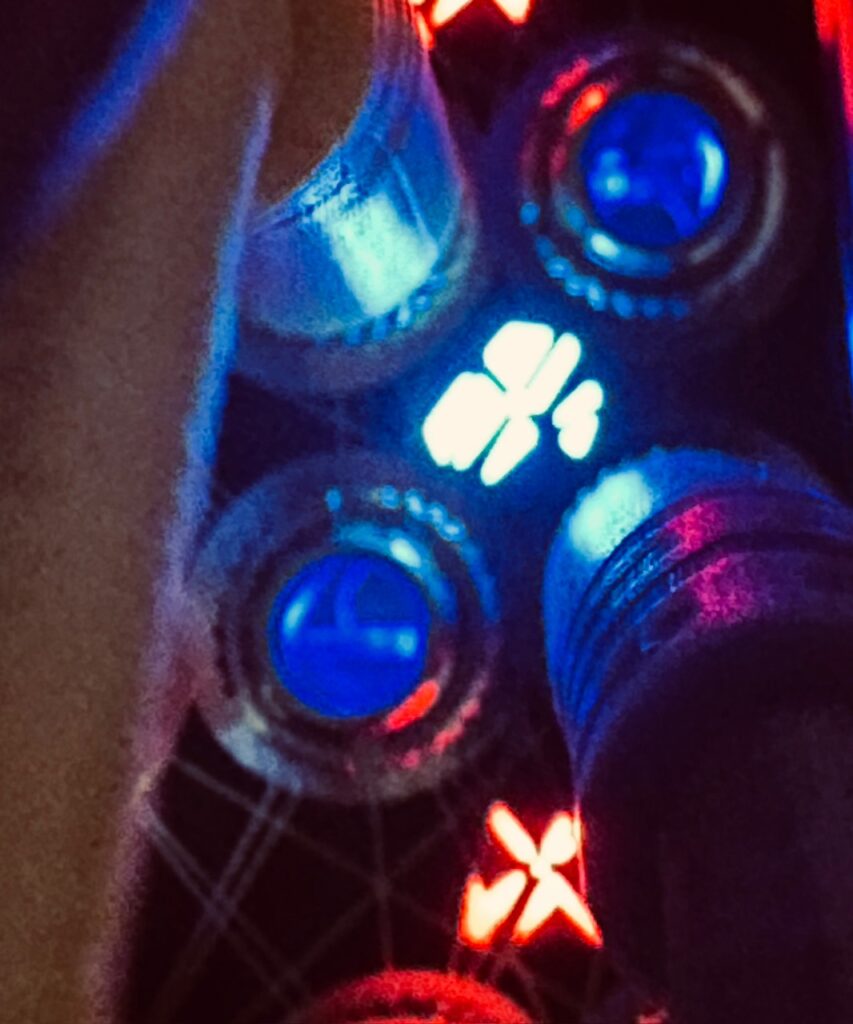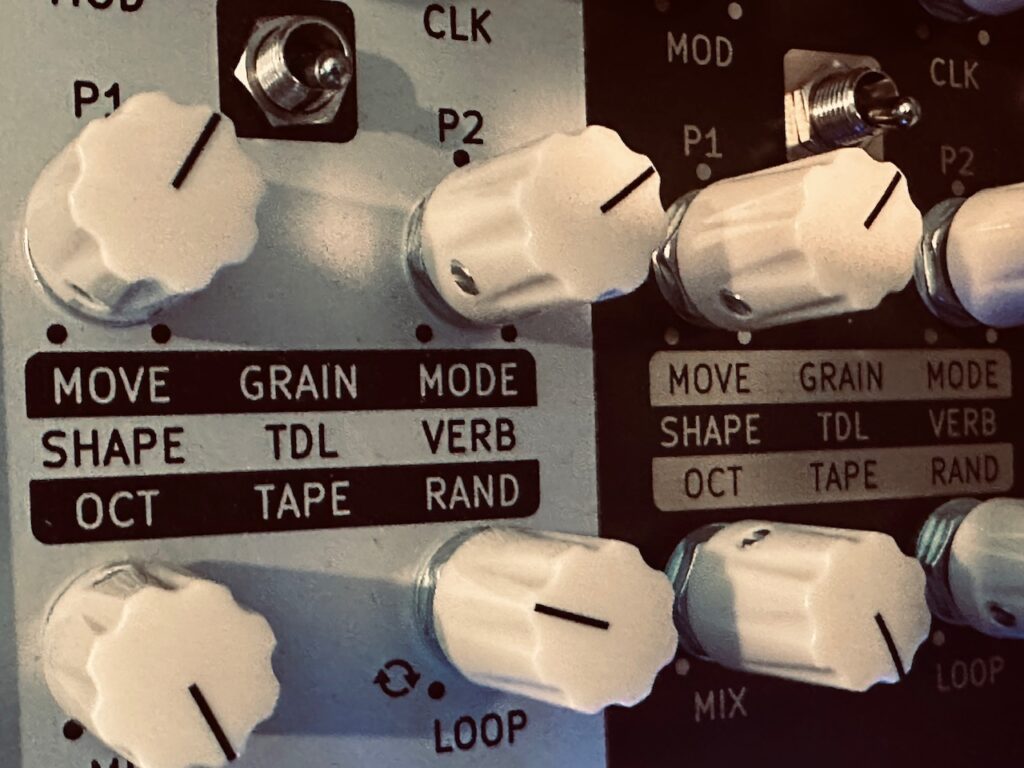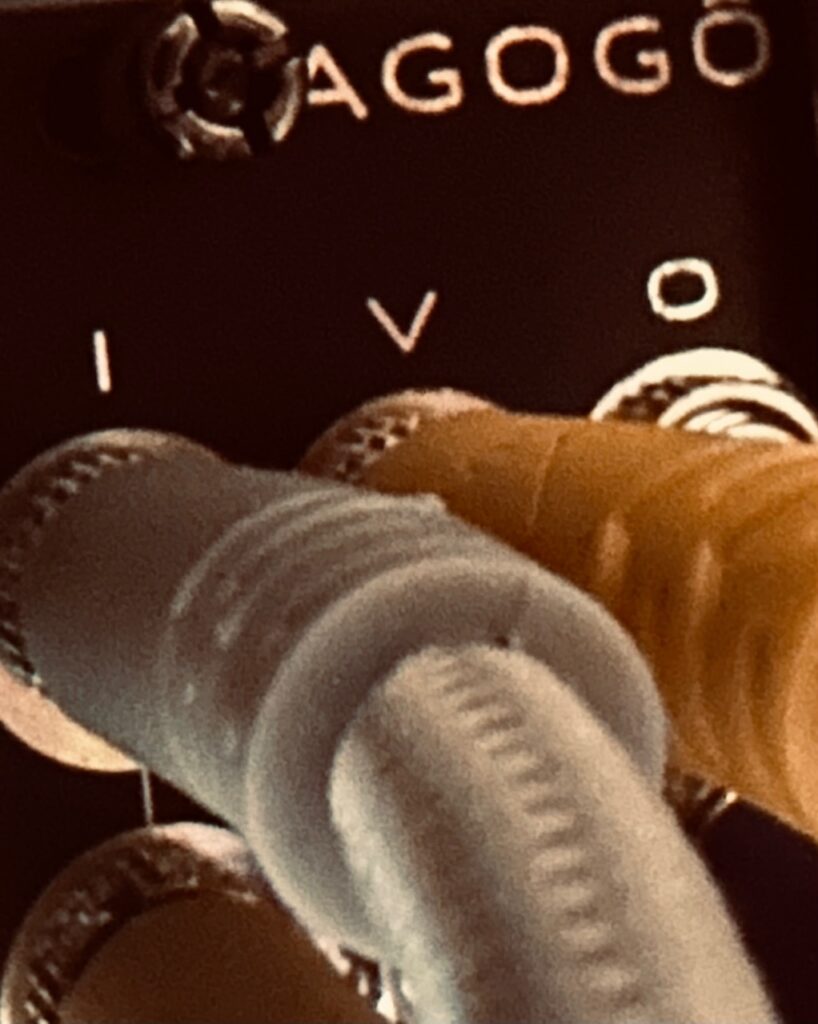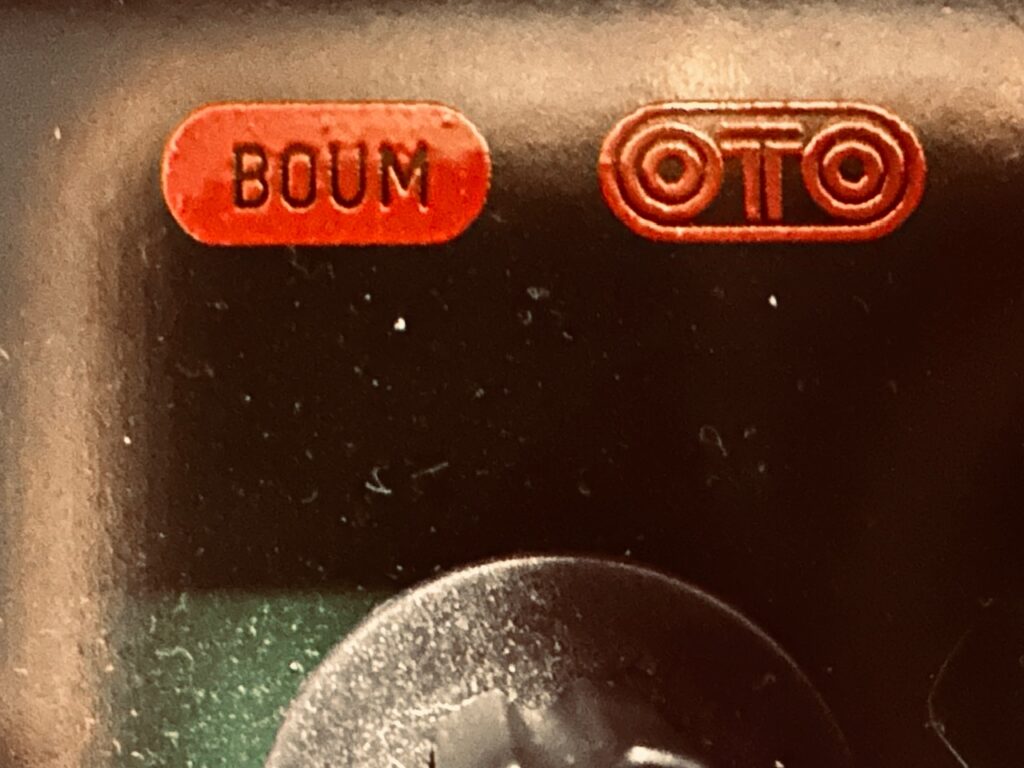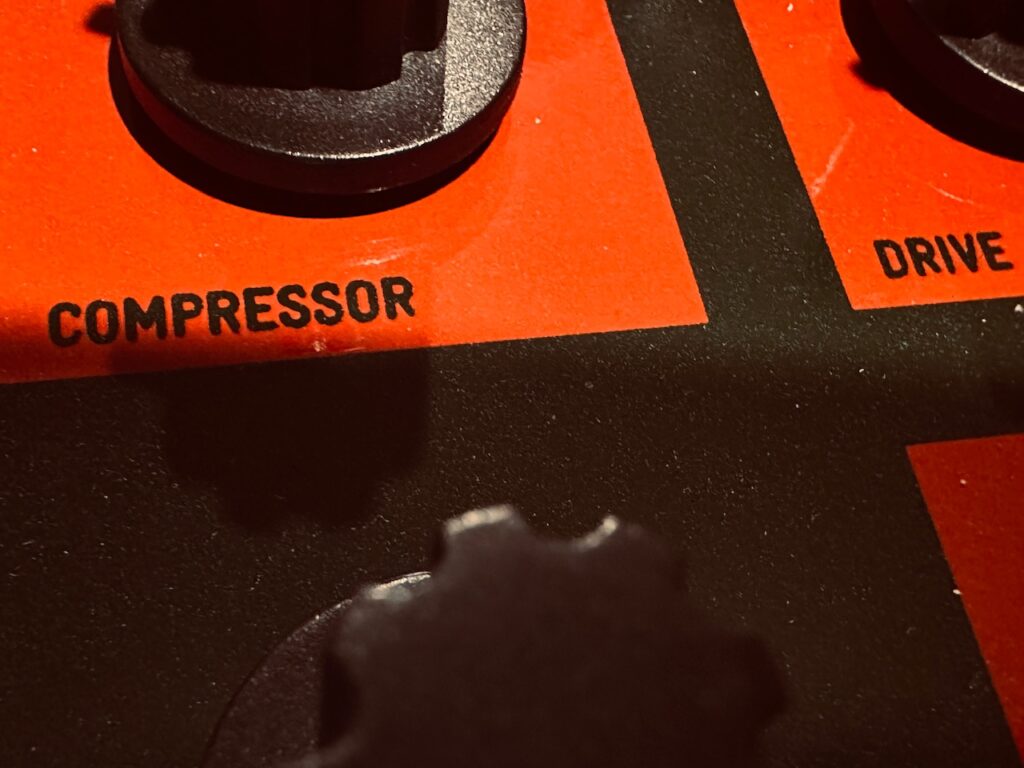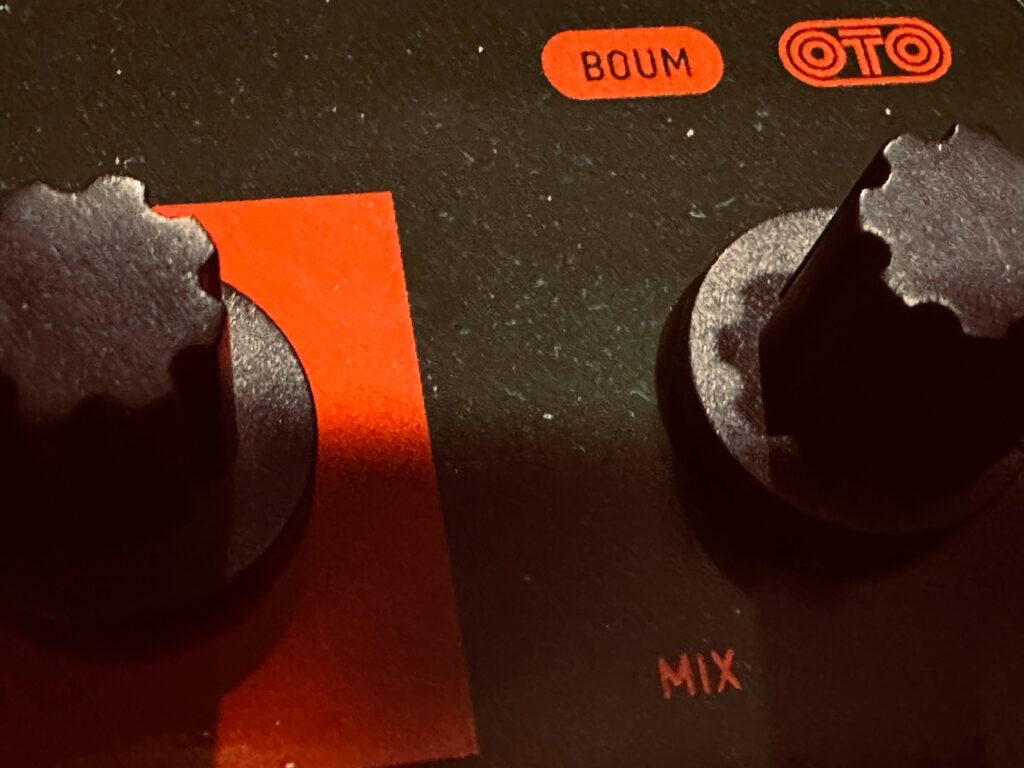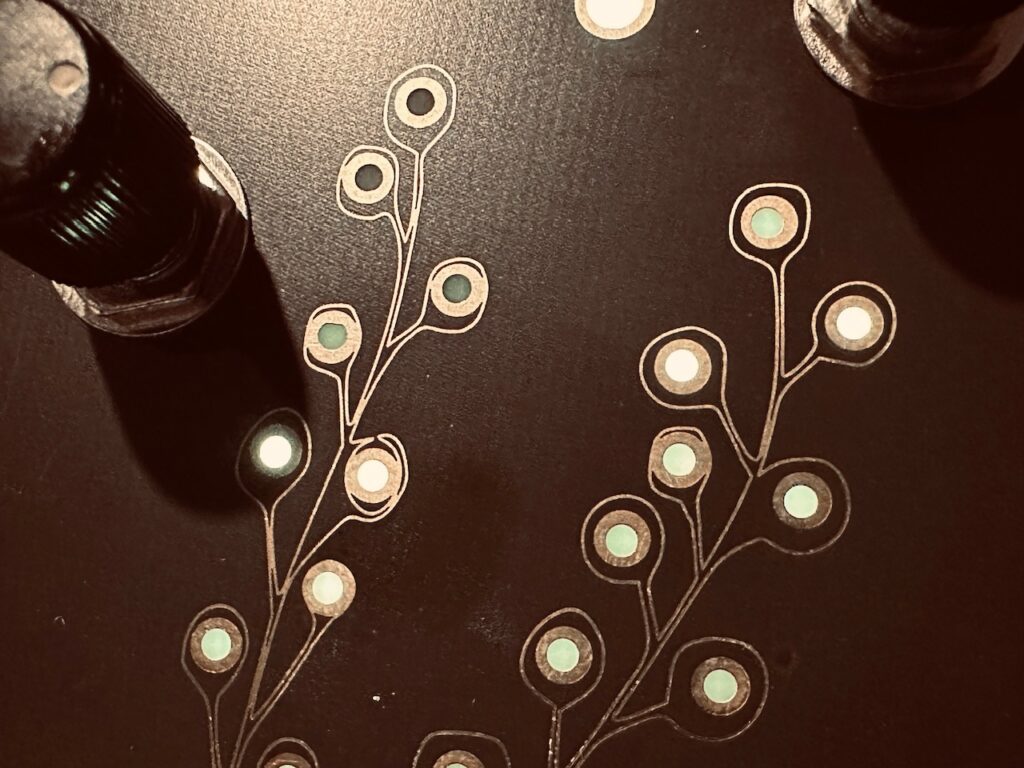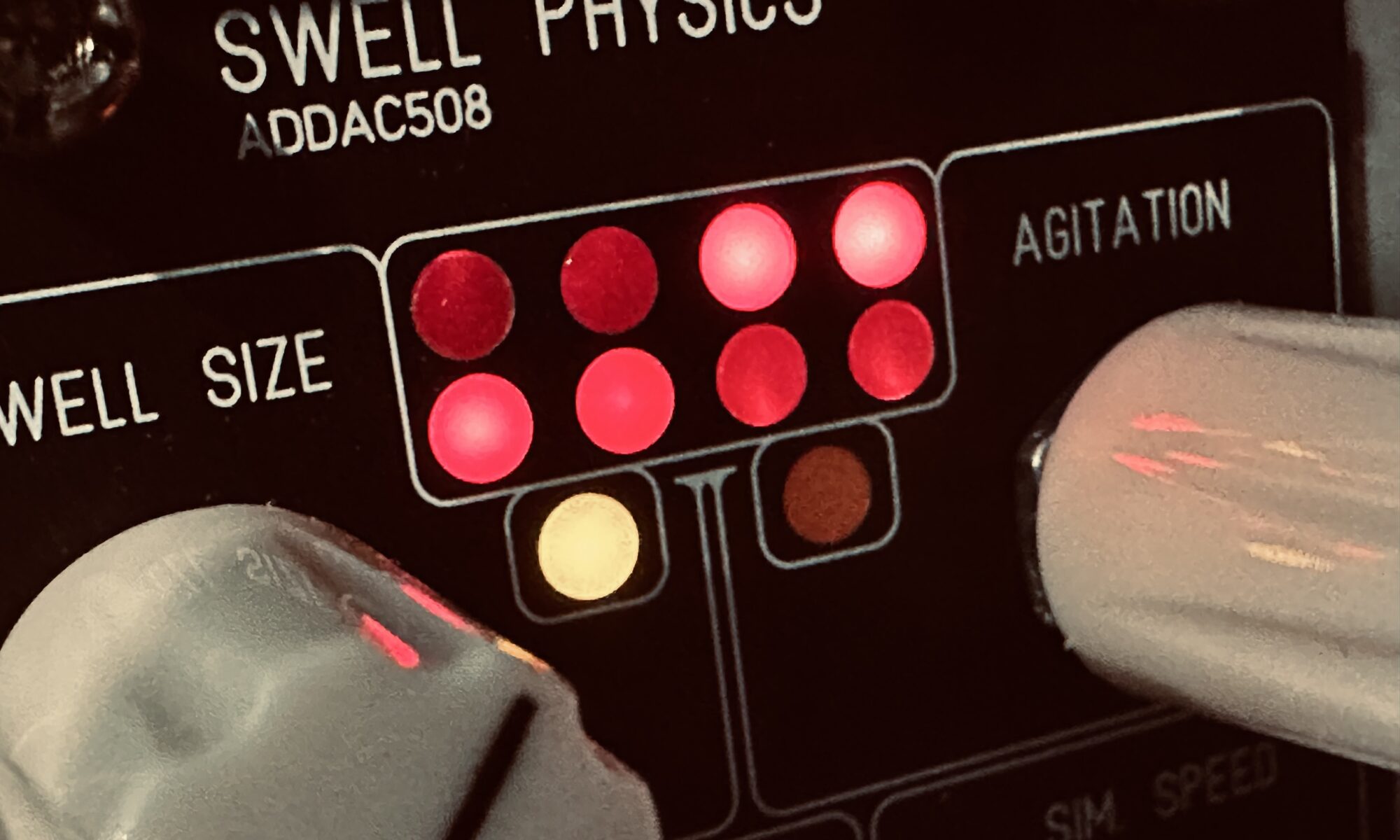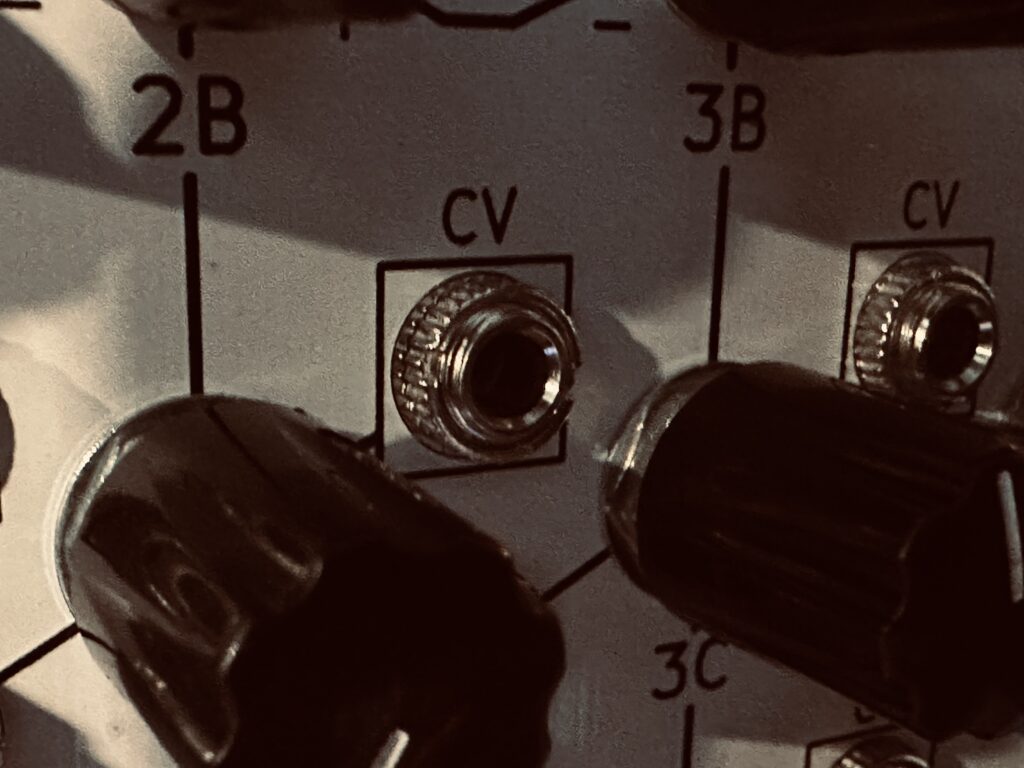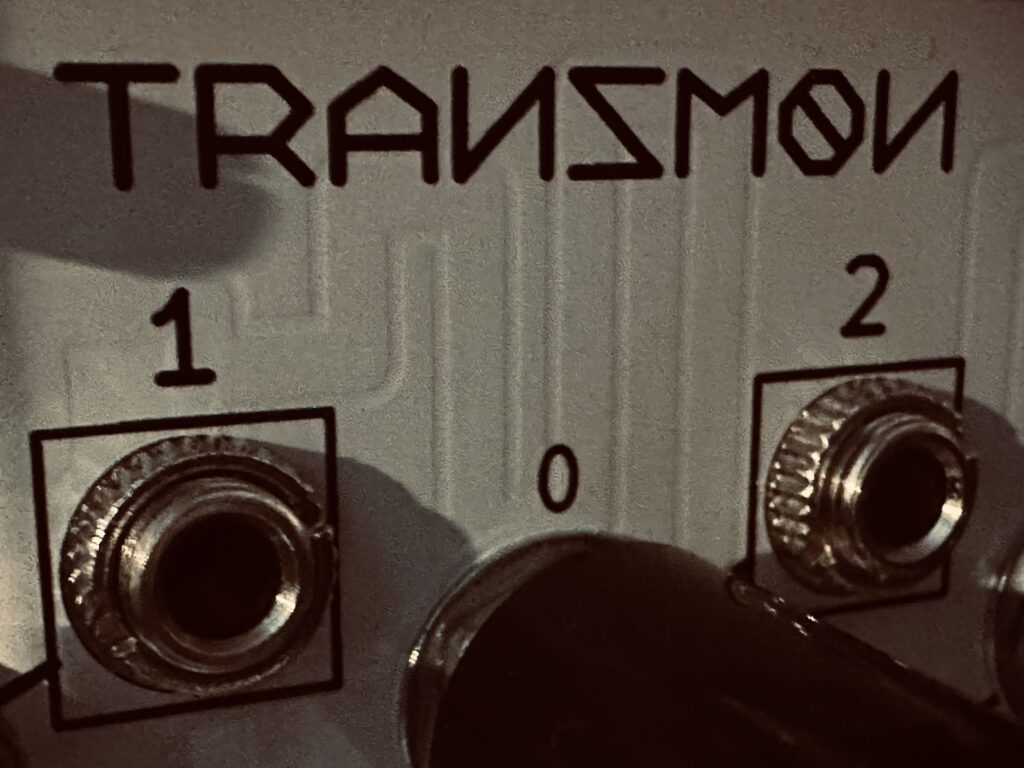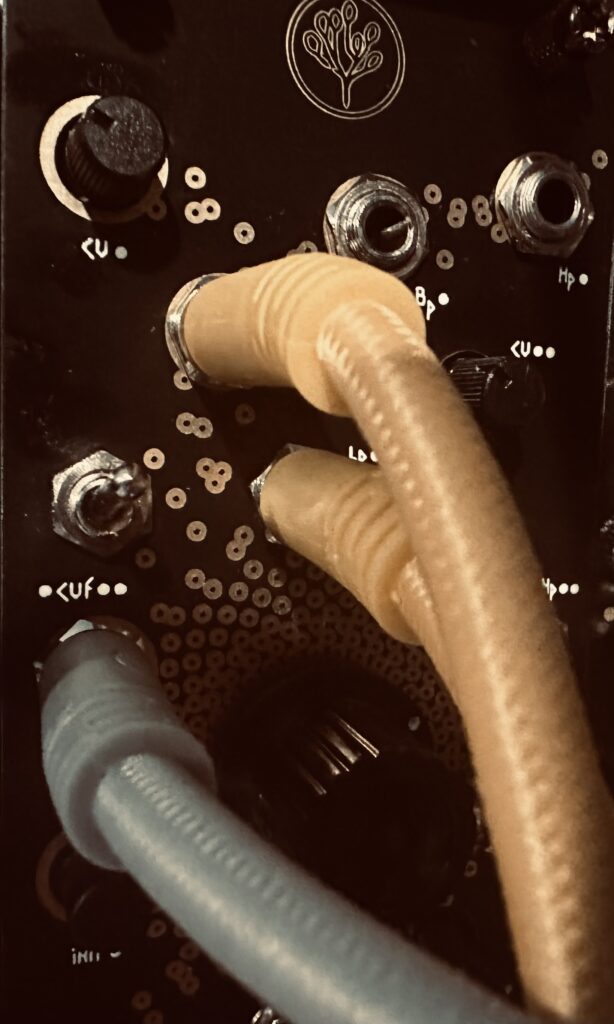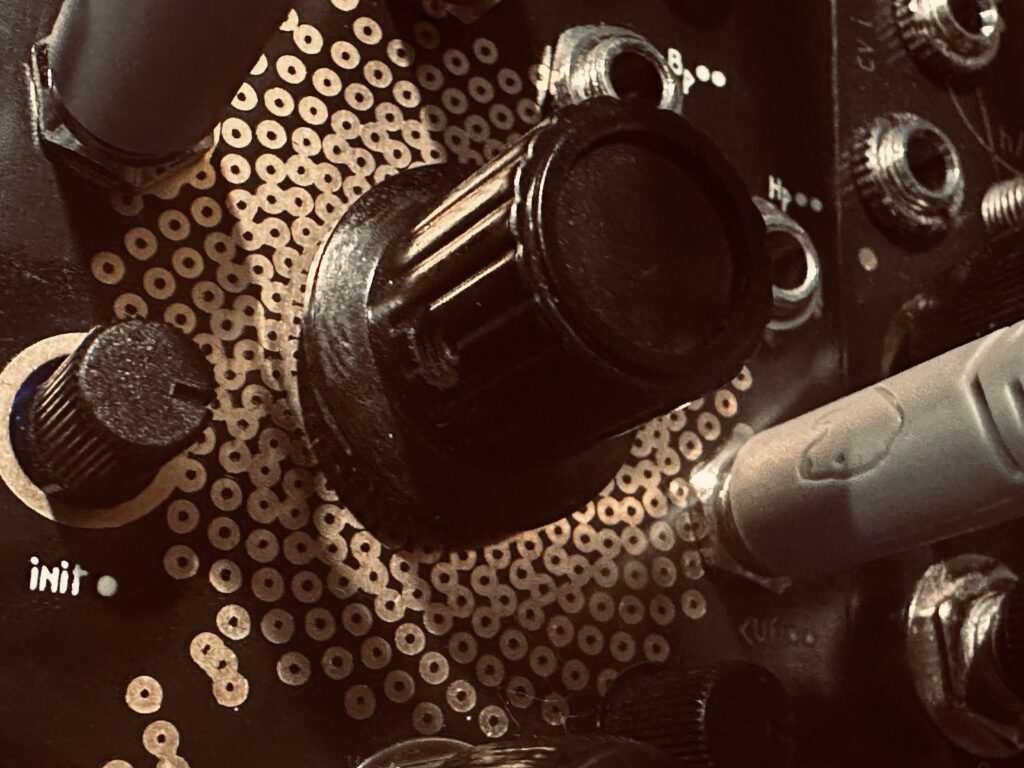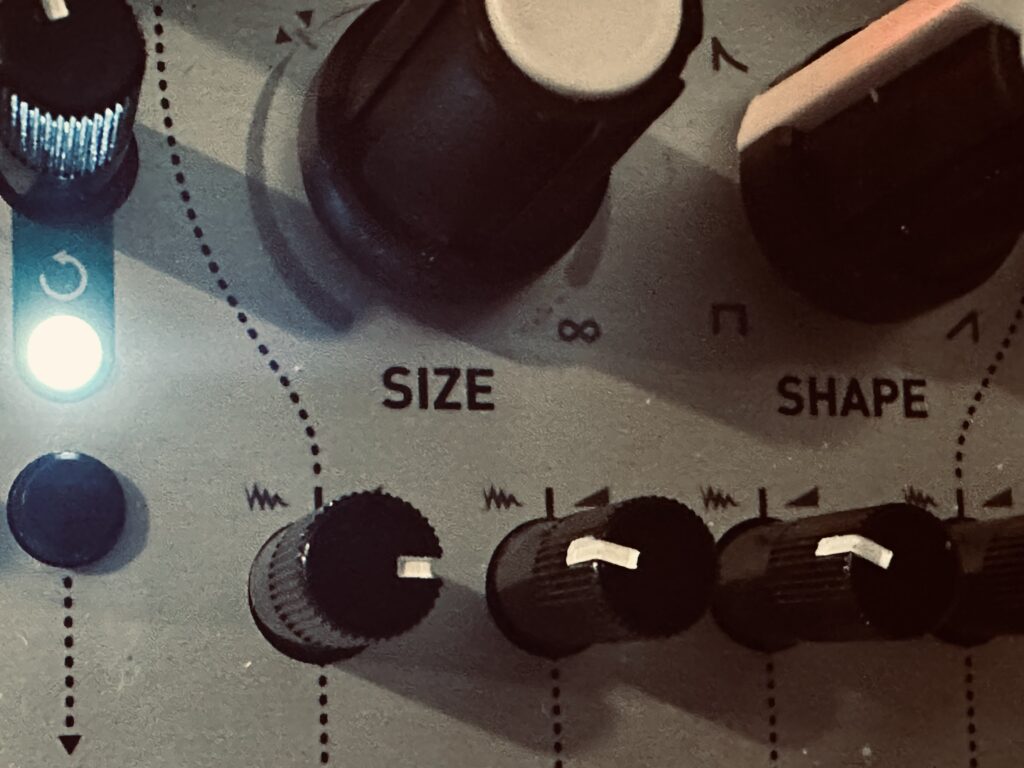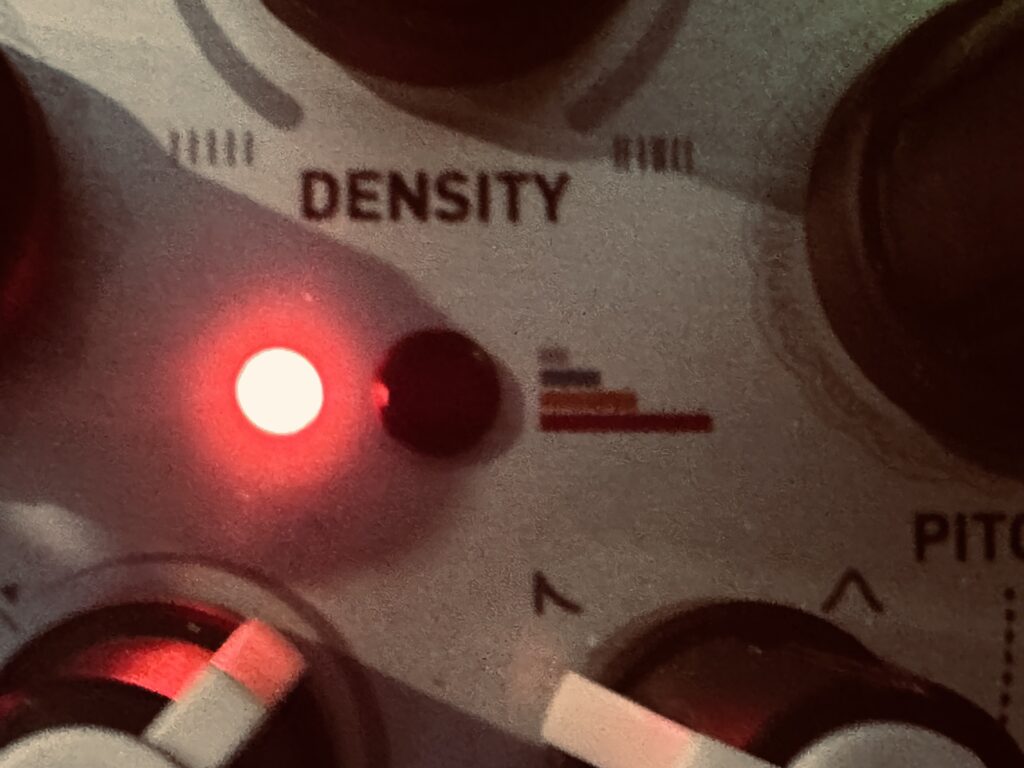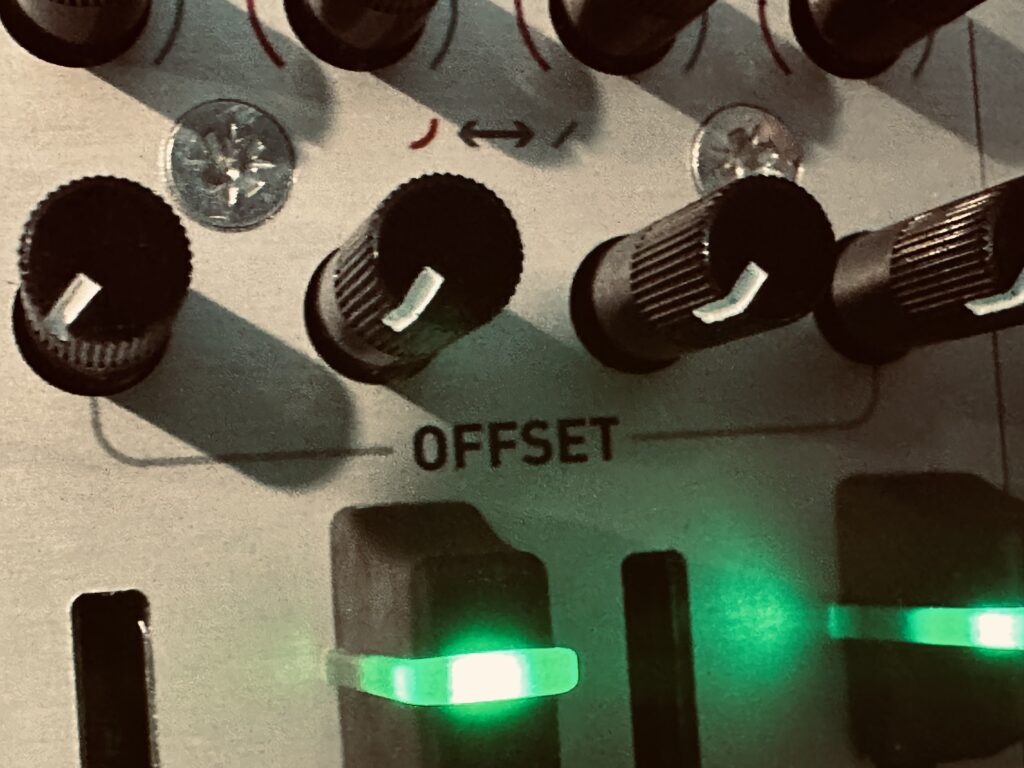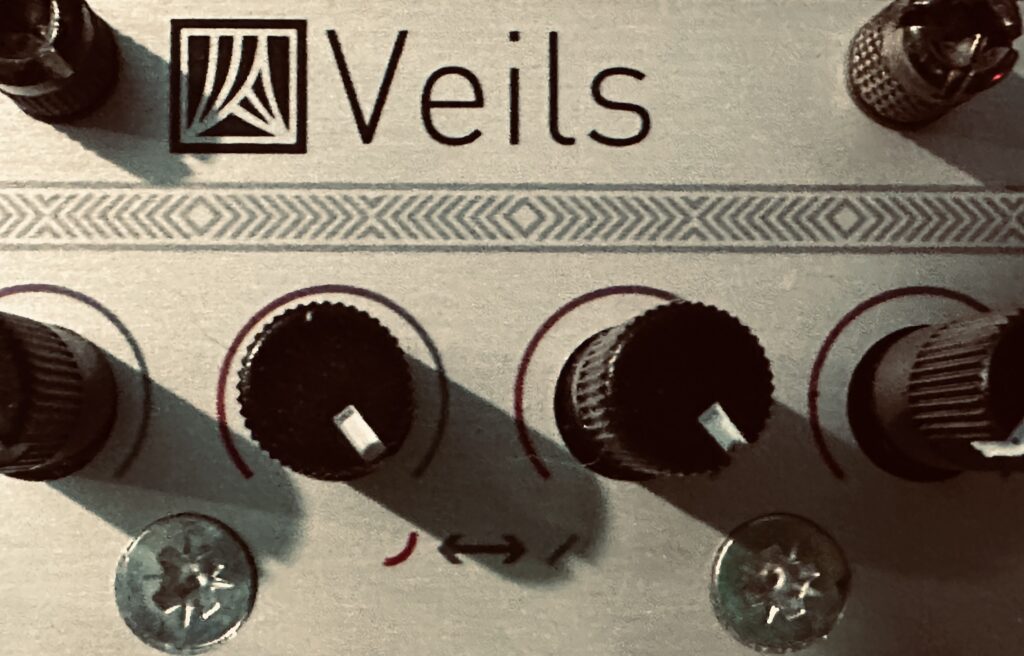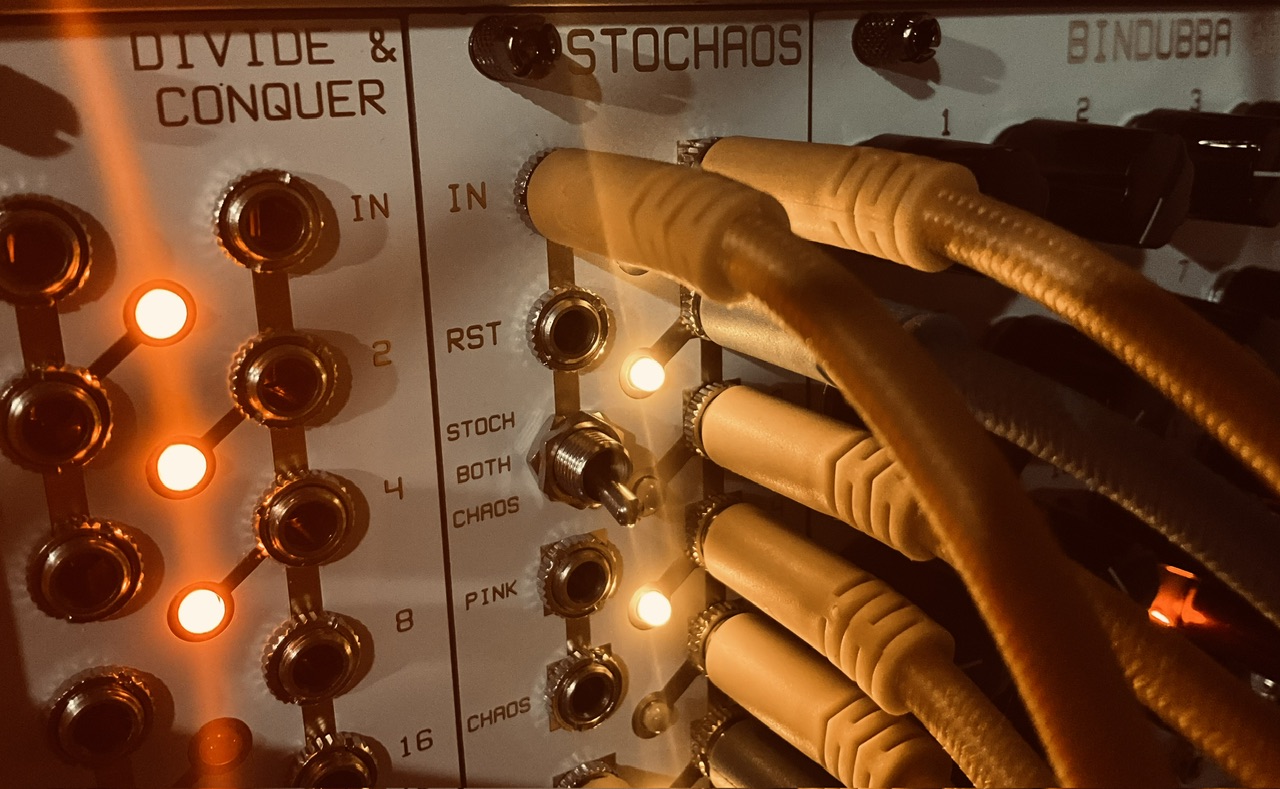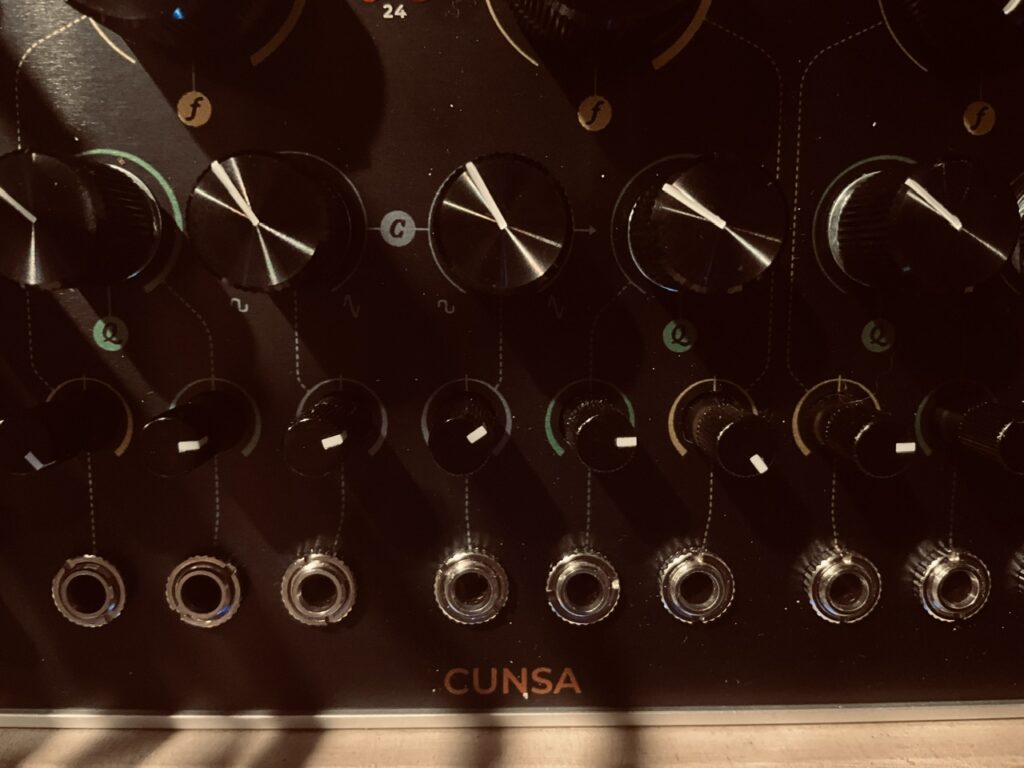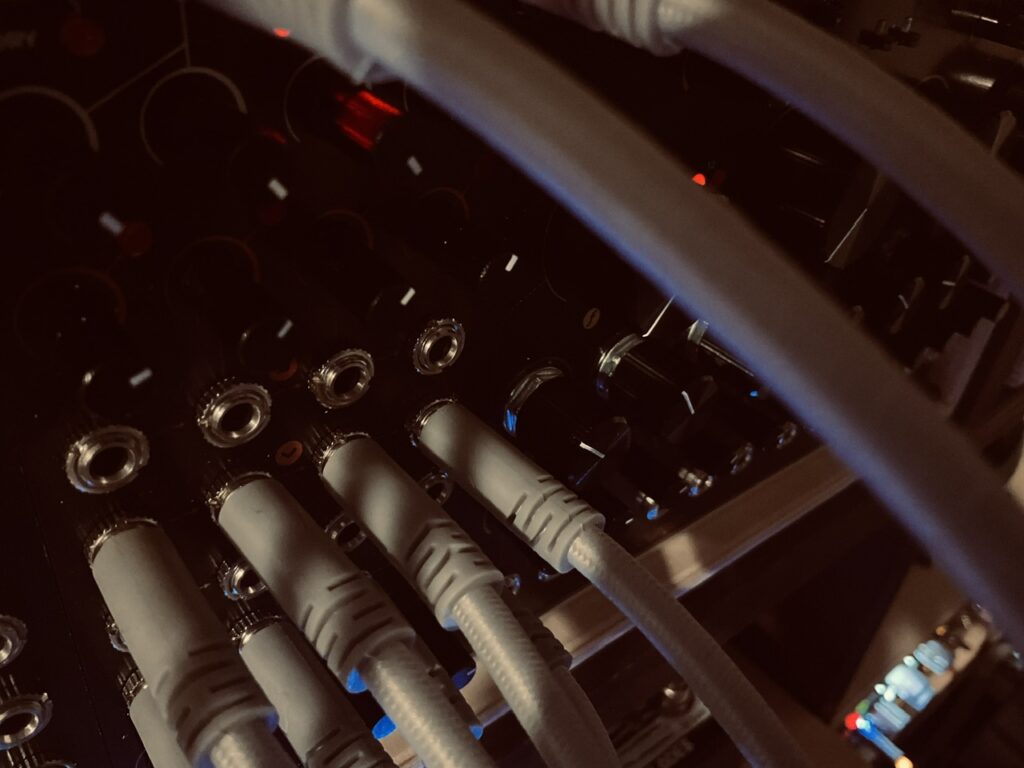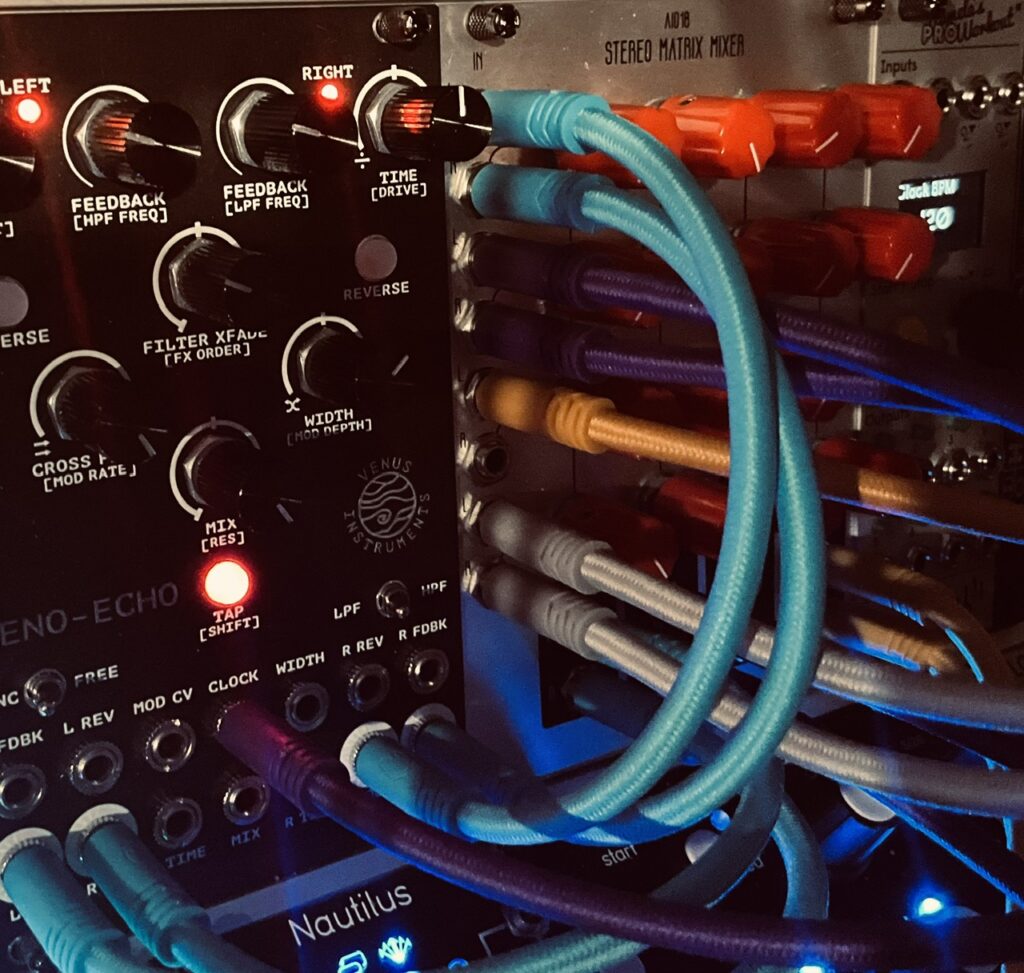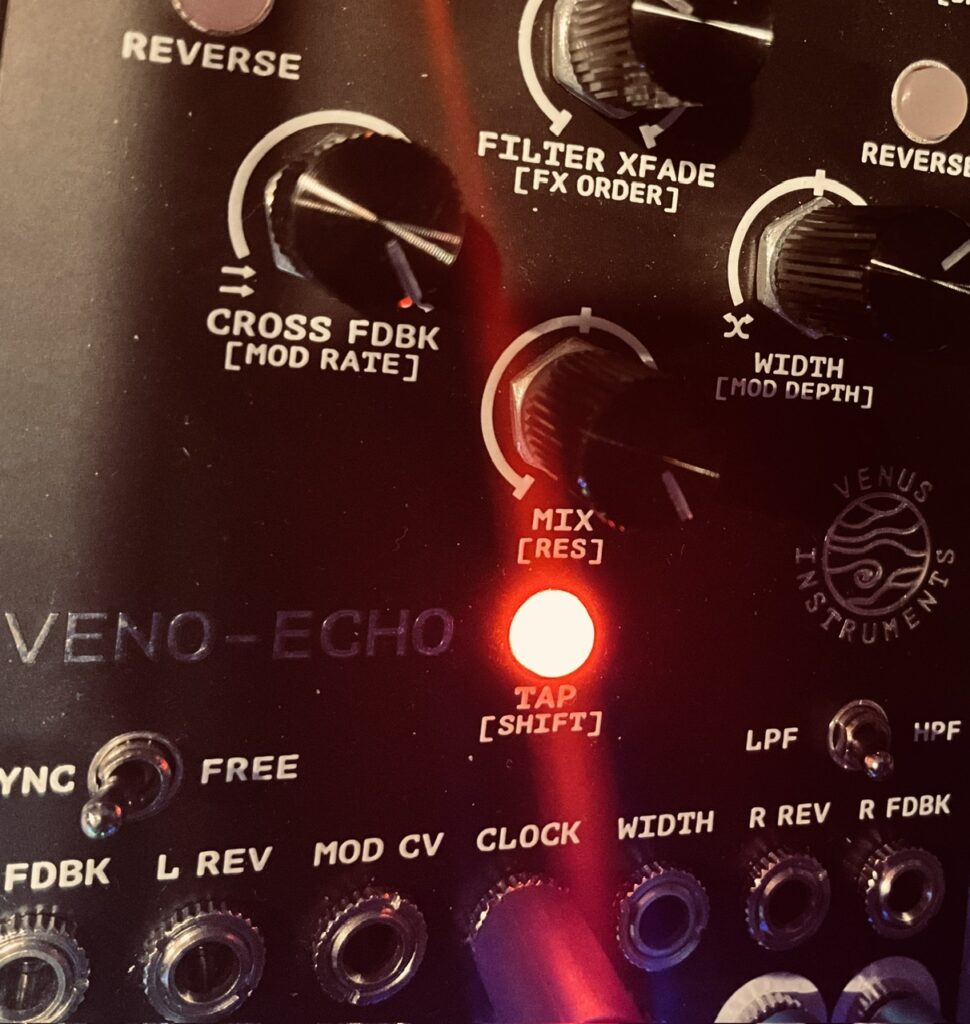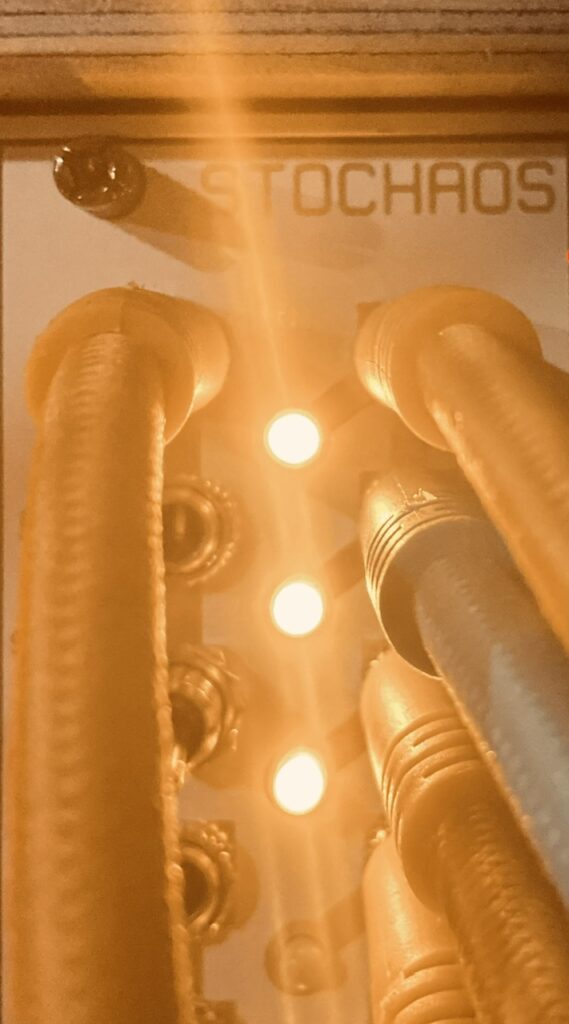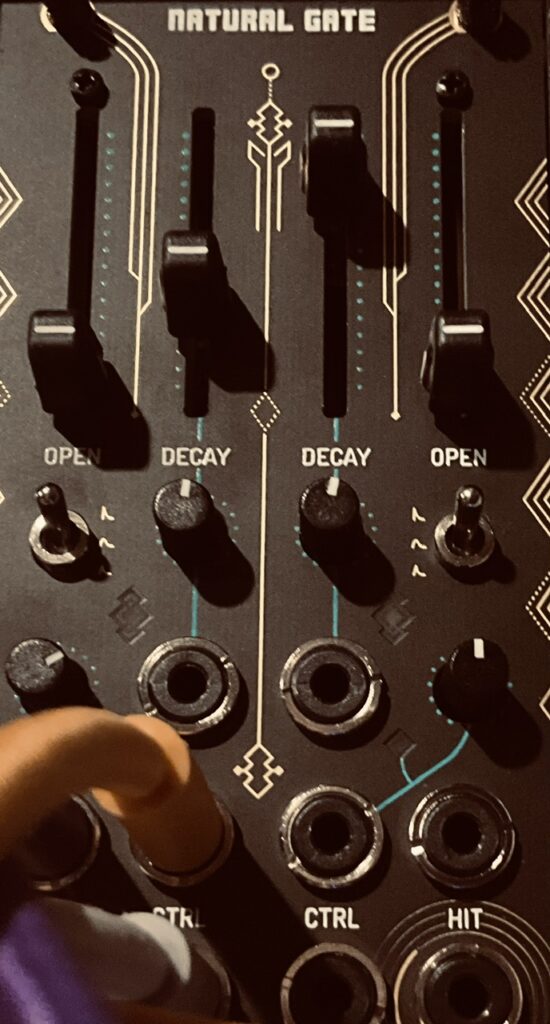I recently sat down with a goal: identify modules in my synth that are underutilized, and make a plan to integrate them into my patches. Like all musicians, synthesists can fall into patterns. We use the same techniques and too often travel similar routes. Though my repetition of techniques of late is somewhat purposeful as I learn new gear, its’s still repetition, and it’s nice to walk on untrodden ground every once in a while.
While I was looking through my folder of manuals, I quickly identified a module that I’ve only used once, and over a year ago: the Blukač Instruments Endless Processor.1 On paper this sort of module seems a natural partner for the kinds of sounds I use most, but for some reason I’ve tended to reach by it and patch something else like the Rossum Electro-Music Panharmonium or Qu-Bit Electronix Aurora. In a bid for some nonlinearity in my practice, I decided that the Endless Processor would be the first of those unused modules to put through its paces.
This patch uses chaos to create a sequence. The starting point is The Hypster by Nonlinearcircuits. I use The Hypster in a lot of patches for a lot of different purposes. I use it for “normal” modulation, the beginning of a chain to make clocks, pitch CV, and maybe more. It’s definitely one of my favorite modules overall, and a top two or three modulator that I’ve used. The Hypster serves many purposes; sometimes more than one in a given patch. In this patch it would serve all three of those functions, plus a bit of self-modulation to keep it from settling into something resembling a pattern.
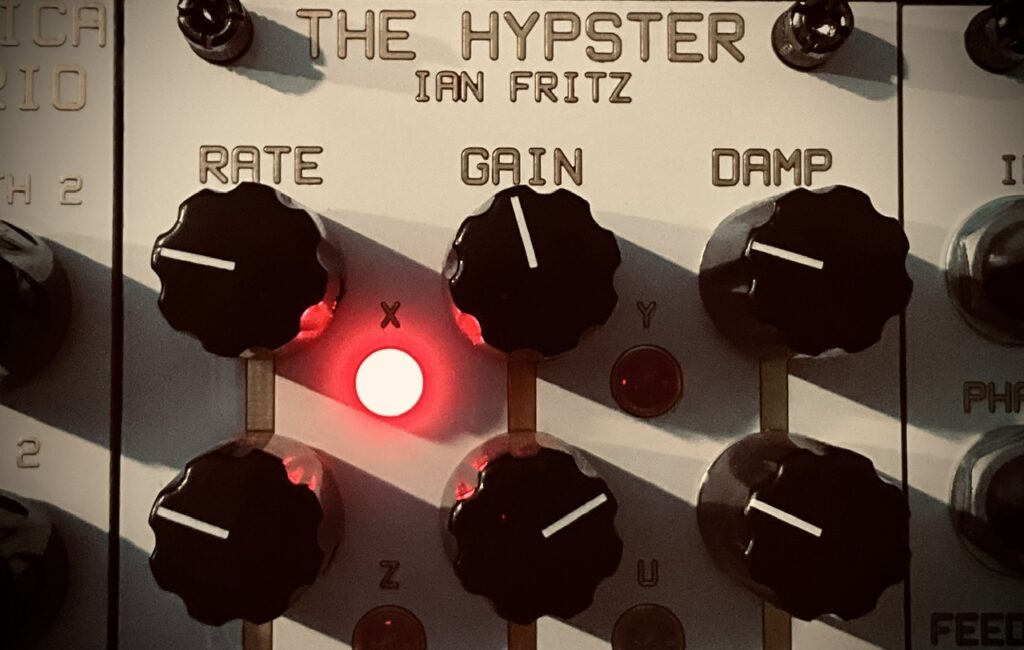
Four outputs from The Hypster (X, Z, -Y, -U) were patched to another Nonlinearcircuits module, Numberwang, for some good old fashioned gate extraction. The last time I used Numberwang, I wanted a steady-ish rhythm. Not perfectly-on-the-grid steady, but something close, even if it had the propensity to drift (which was a big part of the point), which is why I didn’t modulate The Hypster in that patch. But this time I didn’t want steady. I wanted gates that can’t easily be tied time, which required a meandering source. Chaos can meander a bit, but it can also become regular in that chaotic kind of way. I didn’t want the regular part this time, so modulation of at least one parameter was crucial. Once I started to ping my oscillators with gates from Numberwang and found a frequency on The Hypster that provided a satisfying cadence, I set out to modulate both the Damp and Gain settings. Adding gain adds both voltage and nonlinearity to the feedback loop. More gain is higher output levels and more meandering. Damping suppresses those things in interesting ways. Modulating both brought revealed the chaotic nature of the signal, specifically through the pitch CV, but also in the gate pattern from Numberwang.
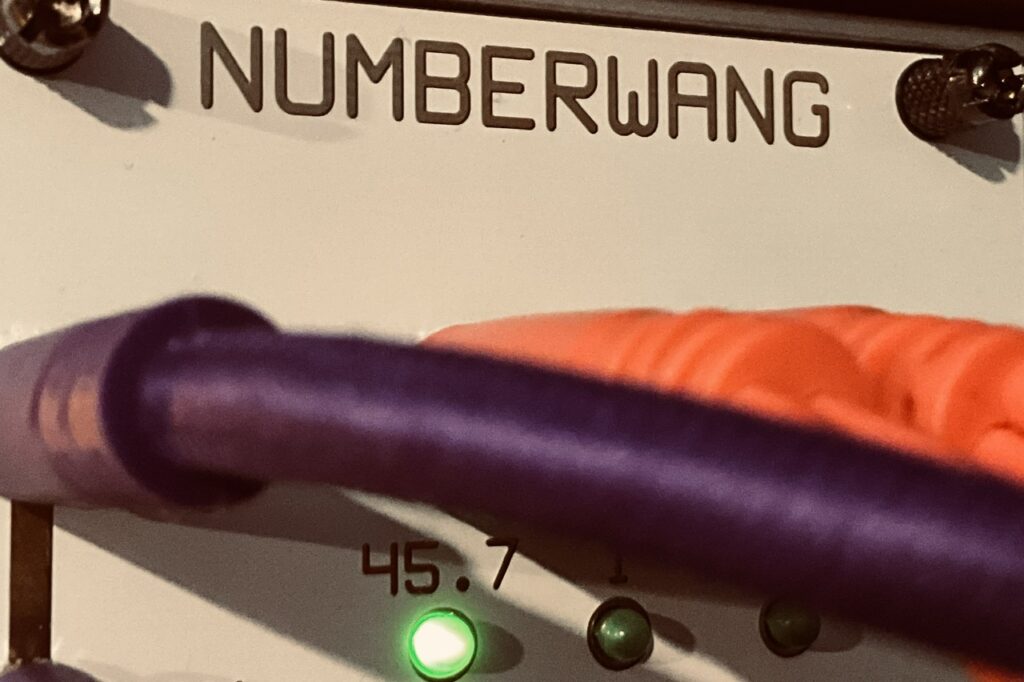
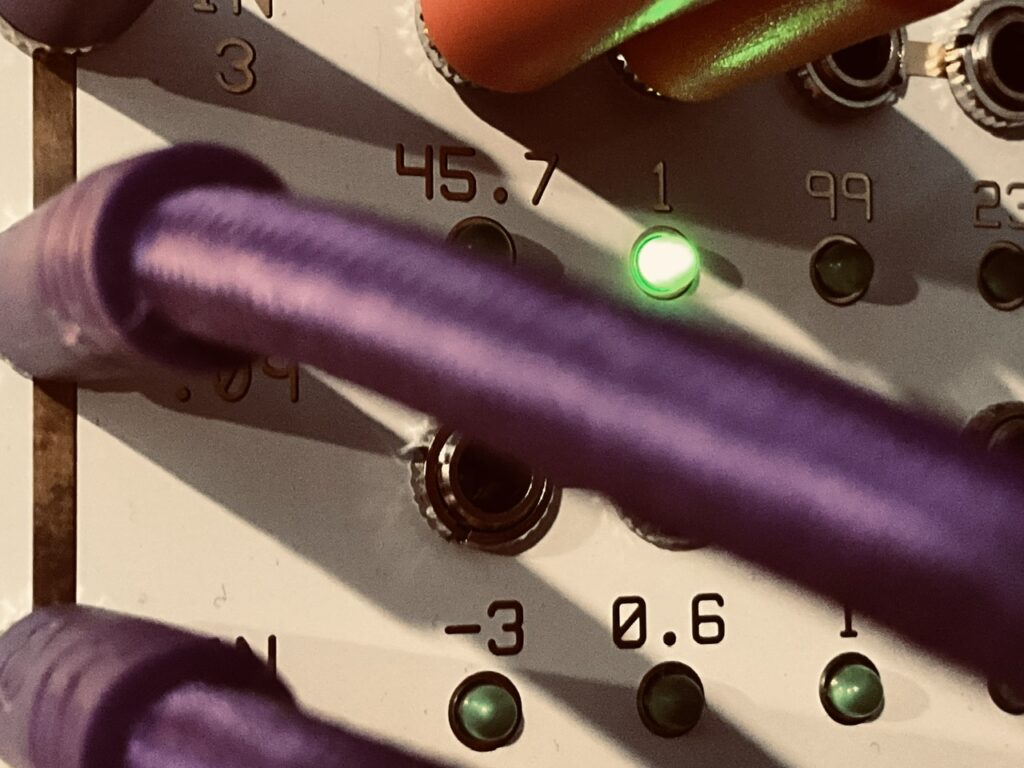
This wasn’t the first time I’ve used a chaos signal an a source for pitch CV or gates. But it was the first time I’ve used chaos as a source for pitch and gates while I performatively modulated it so that I would have more control over its range, or the way it meanders. Too much gain and you have pitches more fit for dogs than humans) Too much damping, and you have pitches without enough variation to keep the note sequence interesting, and gates that quickly turn into patterns (even if they do drift a bit). To modulate gain, I used The Hypster’s next door neighbor in my case, Frisson. I also used the -Z output to self-modulate Damping. Although both the Gain and Damping CV inputs both have attenuators, I patched both signals to an attenuator to fine tune the level of modulation The Hypster was receiving. Even very small turns of either attenuator knob revealed very interesting results that would be difficult to achieve with one-pass attenuation at the CV input. Slightly different gate patterns; slightly different notes in the pitch sequence. All very interesting and necessary in order to keep any part of the sequence from becoming dry or repetitive for too long.
I’ve used chaos as a pitch CV source frequently, but this time was a little different. Normally I use one source signal for each oscillator in the patch. But this time I decided to use just one chaos signal as the source for all four oscillators, clocked by Numberwang separately in four separate channels of Quantermain. I controlled the range of pitch primarily through an attenuator, the Nonlinearcircuits De-Escalate.2 This allowed for small changes in pitch choices. One thing I would likely do differently would be to minimize very low pitches by using some offset to the signal before attenuation, especially as I opened up the attenuator. Higher pitches also means lower pitches at the bottom end without some offset, and some of the pitches on the low end are just a little too low for my liking. I imagine some are even inaudible.
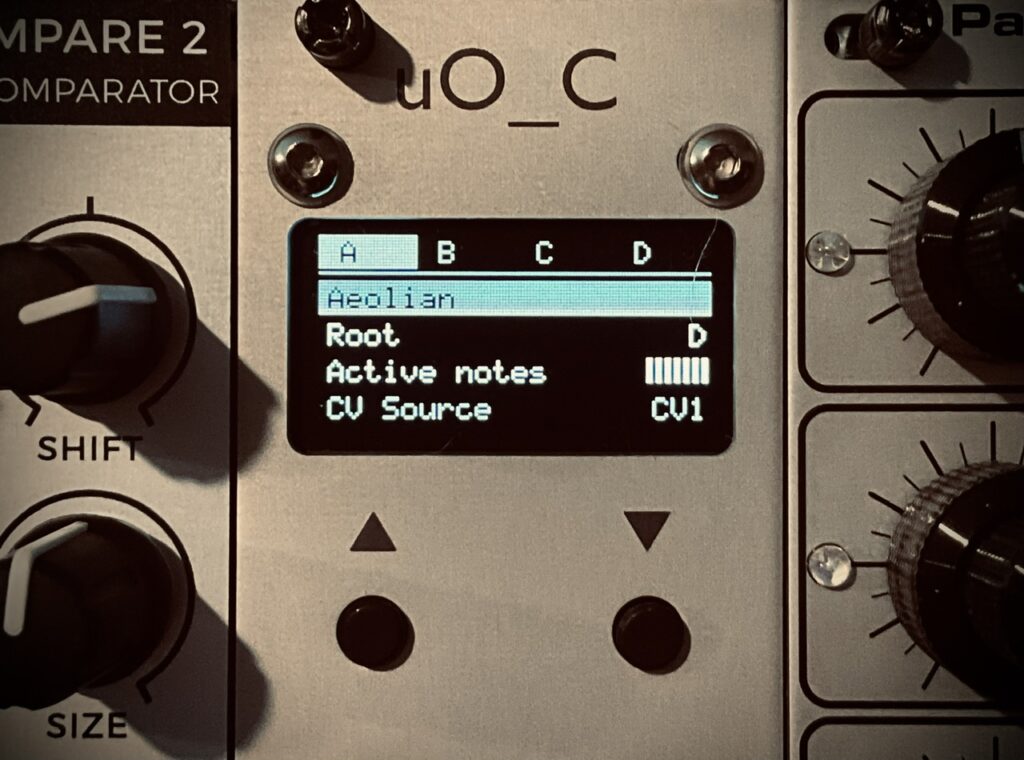
The pitch sequence (in D Minor) was sent from Quantermain to the four wavetable oscillators of the Synthesis Technology E370, with all four oscillators tuned to the same pitch, even if I couldn’t tell you what that pitch is. Each wavetable was lightly modulated by the Frisson, with each oscillator detuned slightly by hand. This constant variation in timbre created a wide variety of sounds. Each note just a little different than the last time it was struck. The oscillator outputs were patched to a pair of Rabid Elephant Natural Gate LPGs for pinging, using the same four Numberwang outputs that selected pitch for each channel.
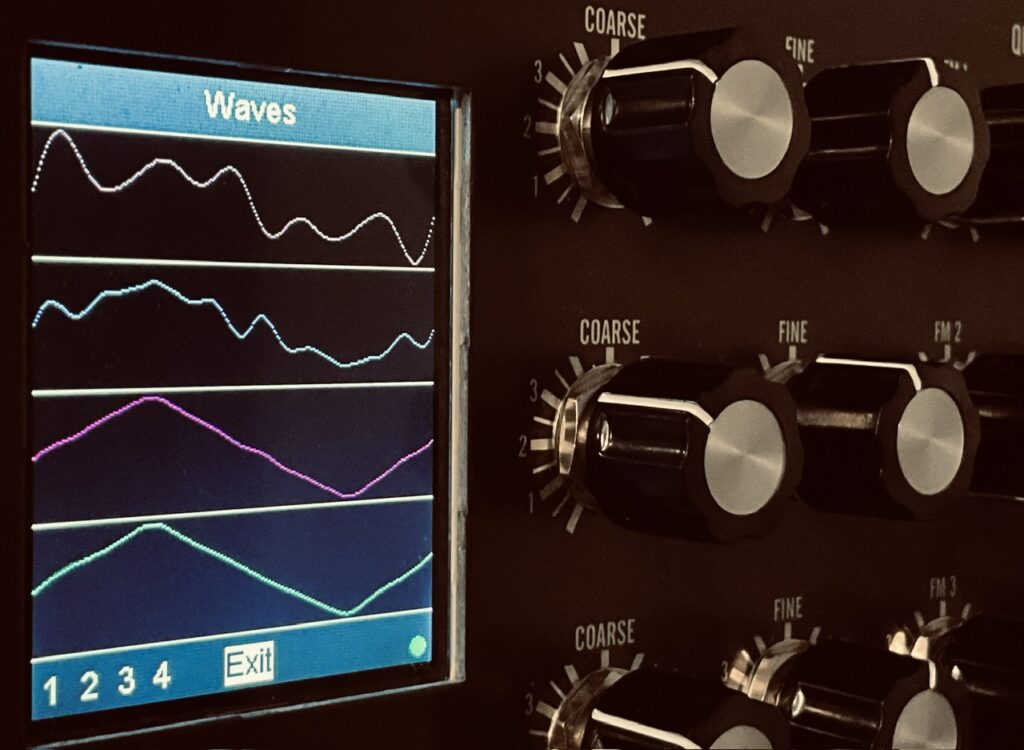
The result is a dance of orbs in some fantastical forest, or drops of water falling to make music, like something akin to a fast moving Fall on the Monome Norns. It’s a beautiful generative sequence, even if this version of the patch used some human assistance. Using a VCA to control levels of the pitch and modulation signals with a very slow modulator would be the key to make it fully generative. In fact, I’ll put that in my patch book to use in the future!
In this patch I used a very simple stereo algorithm: the first Natural Gate outputs are the left channel, and the second Natural Gate outputs are the left channel. Although this decision created a wide stereo space, four separate events happening independently, two in each ear, can become a little distracting and separated, even if it also heightened interest. I think I might have been better served to send these outputs to a panning mixer for mixdown to place them a little more carefully in the stereo field, though I won’t go so far as to say that change should be recorded in ink. There is no sense of a unified space until these completely independent left and right channels hit the stereo reverb.
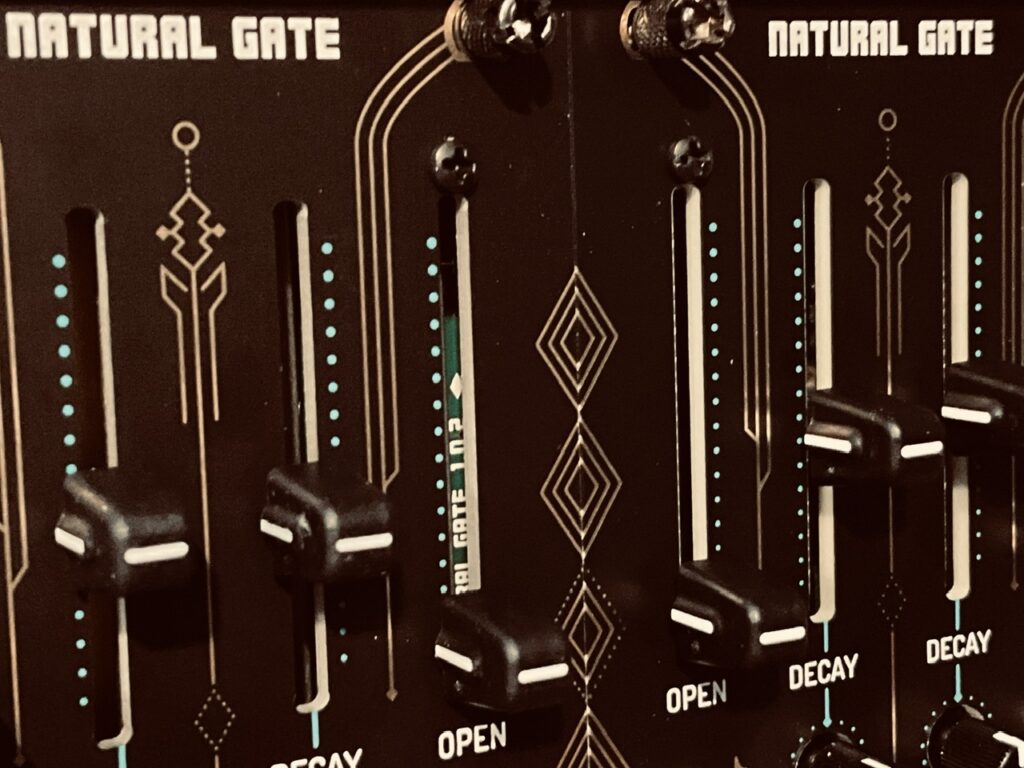
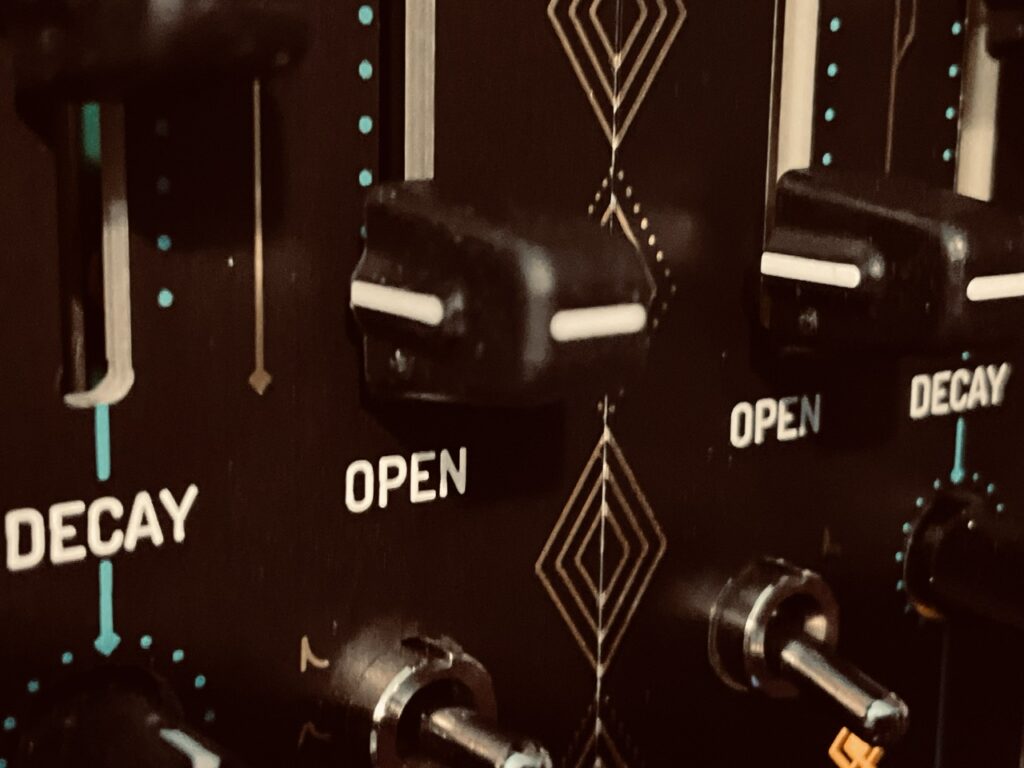
This effect was exacerbated by the dual mono delays used in the patch, a pair of Echofix EF-X2 tape echoes. Each was set to augment the original’s clarity, holding on to timbre as long as it could until atrophy took hold. Each delay was also set to a different delay time and tape head playback/feedback configuration which created very different echo patterns, heightening the very different sequence patterns in each ear.
But I made a terrible mistake. Throughout much of the recording you can hear some clipping in the left channel. While I investigated I made sure levels were good going into the audio interface. Not only were they not too hot, I’d have liked for them to be even louder. At first I thought it might be some artifact in the wavetable being modulated. But why only that wavetable? I then thought I might have set an envelope a little hot before going to Natural Gate, but that wasn’t it either. Then I heard it. A clue. The clipping wasn’t on the note generation itself, but only occasionally on the very first repeat of only particular notes. It doesn’t happen all of the time. As I was recording i investigated my gainstaging. I discovered that my levels going into the left channel delay were quite hot, and that’s what was causing the clipping; the inbuilt analog limiter that was occasionally being hit very hard and distorting. At least I think that’s what it was. Toward the end of the recording I adjusted the input level to the left delay which seemed to mostly sort the issue.
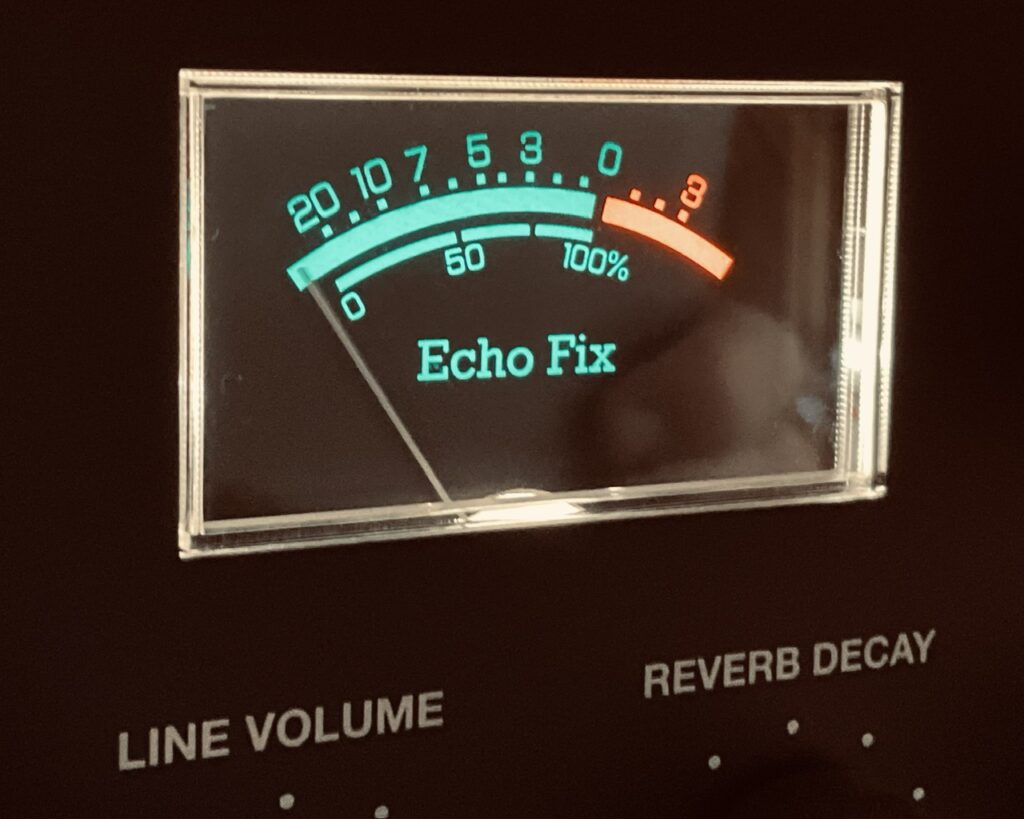
I also used The Dradds in this patch, although in a way I had never used them before, with the Grain algorithm. I had sort-of tried this mode before, but never really investigated it with the manual until this patch. Like when I actually RTFM while using The Dradds in the Tape algorithm, I was immensely happy with the result. Understanding your instrument is key. As synthesists we can happy accident our way into nice sounds regularly. But you can’t really compose with the hope that your knob twists will land you where you want to go. Just as strumming away on a guitar, or pressing piano keys doesn’t create something musical, you can’t really get music from a modular until you know which knobs to turn and when/how much to turn them. For this patch I chose to scan each buffer using a chaos signal from Frisson. This was nice movement, but the scarcity of notes feeding The Dradds meant that sometimes there was nothing in the short buffer to scan, or so little that it wasn’t scanned while it was in the buffer. This served to keep the Dradds from becoming too busy and overtaking the patch, but I would have liked more from The Dradds at many points.
The last effect used (besides reverb on the entire output) is the aforementioned Endless Processor. I hadn’t used this module much before. Not because I don’t think it would add a beautiful dimension to my patching, but because of unknown reasons that had me patching other FFT-like modules instead. The Endless Processor is a very simple module that does just one thing: it analyzes the frequency and level information of incoming audio, and endlessly sustains an average of that audio until you clear the layer. You can clear layers, or replace them with new audio, but ultimately the Endless Processor is a very simple instrument. It’s perfect for drones or making chords. It’s perfect for creating air in your patch, or filling space and creating texture. You can even use this module for stabbing techno chords.
But simple doesn’t mean easy. Capturing the exact sound you want, particularly at lower Memory times, can be challenging. You don’t always get the capture you hoped for (something that happened during this recording), and sometimes you get a capture that sounds downright bad. Today was my first day with it, so I think I can forgive myself for getting “meh” results in my first recording with it. I can only discern one capture, though I was pretty sure I did at least four of them on layers one and two. My initial goal was to have both channels of the Endless Processor float back and forth in the stereo field at different rates, but with only one sound being audible it’s pretty awkward, especially with as loud as it is. Clearly, I need practice.
Overall I really enjoyed creating this patch. Chaos is always fun to use in whatever capacity I use it. The Natural Gates shines again. The Echofix tape delays, brilliant. The Dradds doing Dradd-y things. My hope is to really work with the Endless Processor, as I can absolutely see just what a boon it could be in my practice.
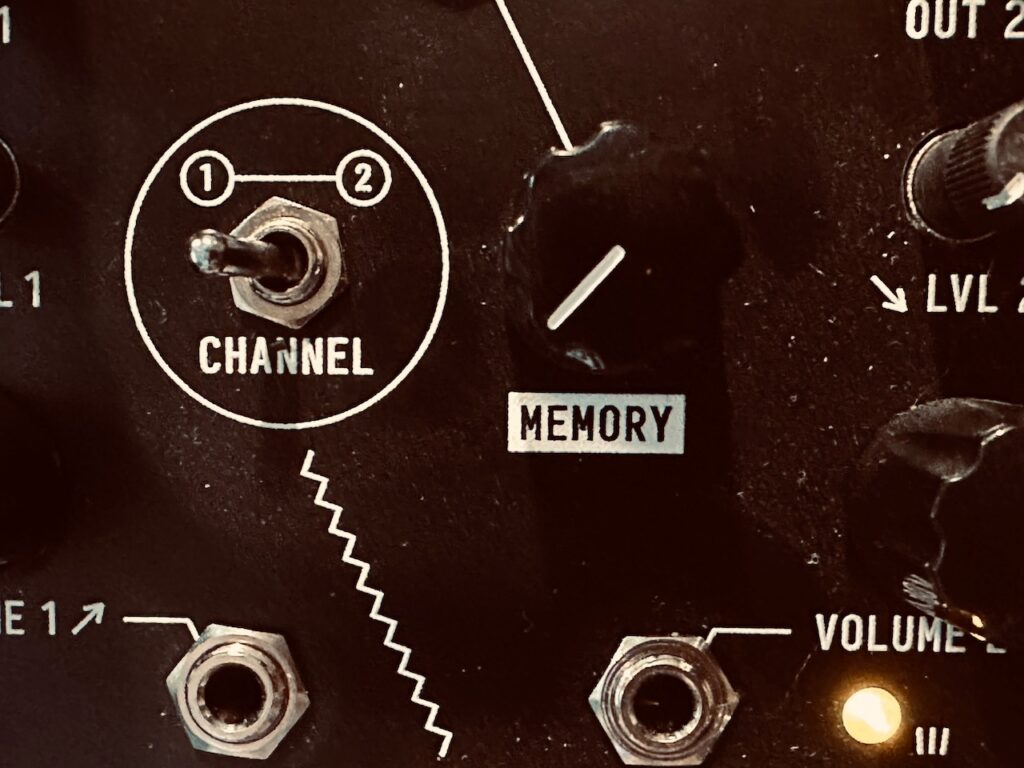
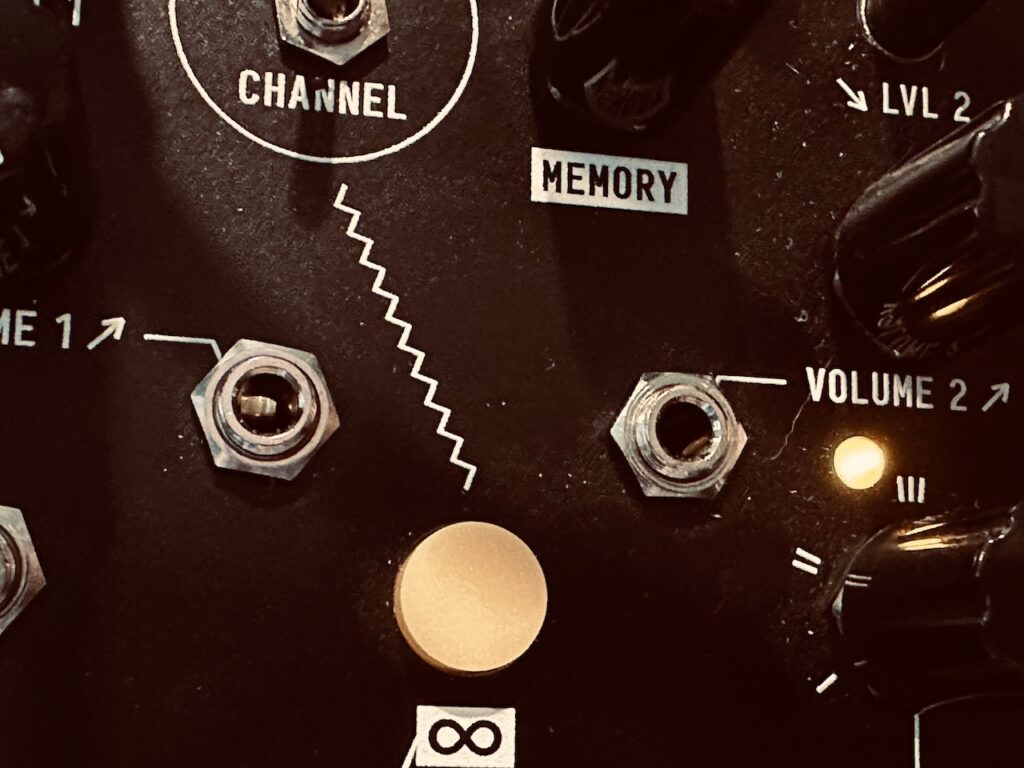
Modules Used:
Nonlinearcircuits The Hypster
Nonlinearcircuits Frisson
Nonlinearcircuits Numberwang
Nonlinearcircuits De-Escalate
Synthesis Technology E370
uO_C (Quantermain)
Pladask Elektrisk Dradd(s)
Blukač Instruments Endless Processor
Rabid Elephant Natural Gate(s)
Calsynth Changes (MI Stages)
AI Synthesis 018 Stereo Matrix Mixer
ST Modular Sum Mix & Pan
Intellijel Amps
Knob Farm Ferry
Outboard Gear Used:
Echofix EF-X2
Walrus Slöer
Performed and recorded in 1 take in AUM on iPad via the Expert Sleepers ES-9.
- I actually identified a whole lot of modules that have been underused, and am making a plan to use them, or sell them. ↩︎
- As much as I like the De-Escalate, it would be a much easier tool to use were the jacks to one side and the knob on the other. Input-Knob-Output is a horribly patching orientation for minimizing spaghetti. ↩︎

